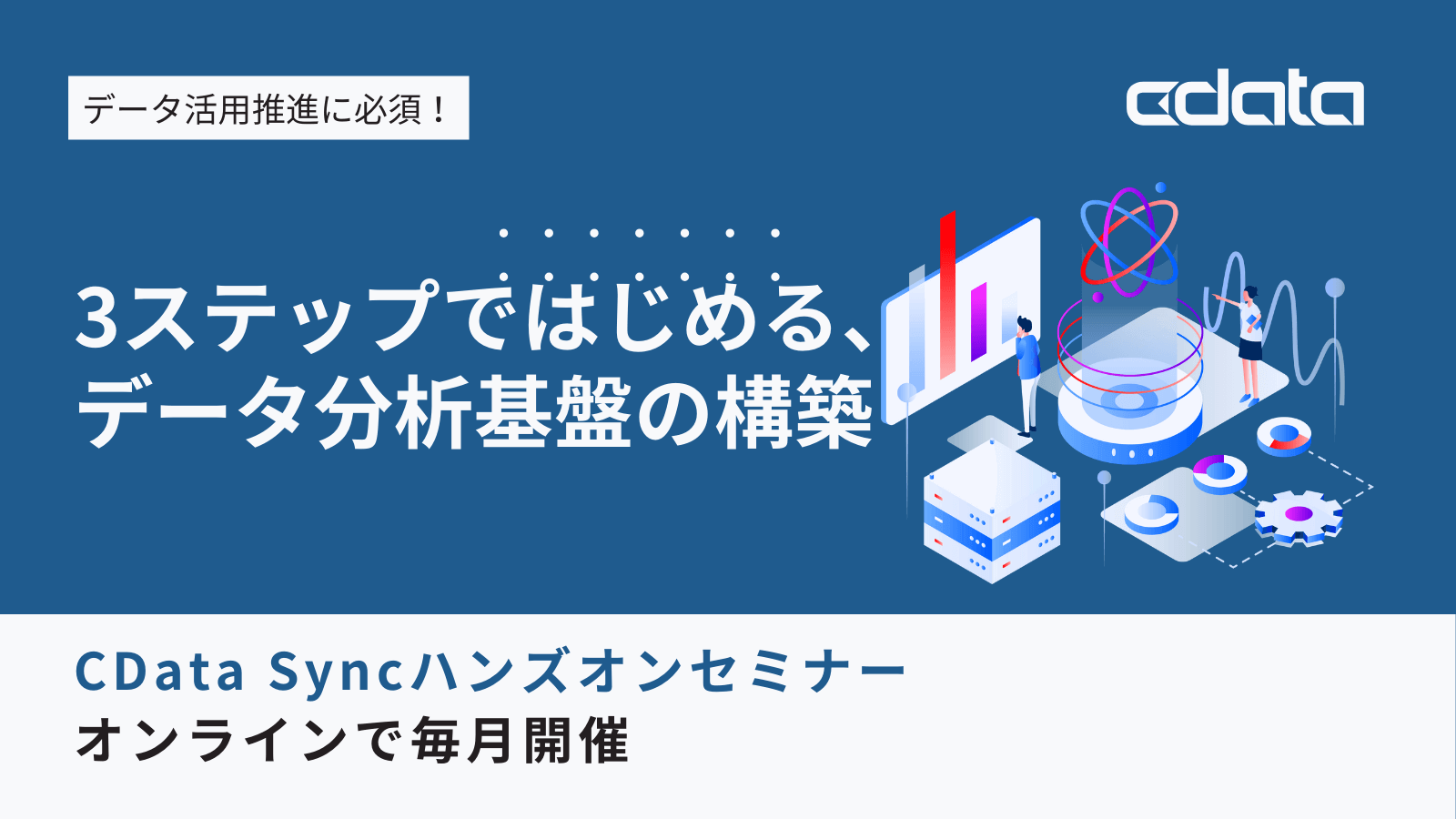ノーコードでクラウド上のデータとの連携を実現。
詳細はこちら →CData Software Japan - ナレッジベース
Latest Articles
- MySQL のデータをノーコードでREST API として公開する方法:CData API Server
- CData Sync AMI をAmazon Web Services(AWS)で起動
- Connect Cloud Guide: Derived Views, Saved Queries, and Custom Reports
- Connect Cloud Guide: SSO (Single Sign-On) and User-Defined Credentials
- Connect Cloud クイックスタート
- Shopify APIのバージョンアップに伴う弊社製品の対応について
Latest KB Entries
- DBAmp: Serial Number Expiration Date Shows 1999 or Expired
- CData Drivers のライセンスについて
- Spring4Shell に関する概要
- Update Required: HubSpot Connectivity
- CData Sync で差分更新を設定
- Apache Log4j2 Overview
ODBC Drivers
- [ article ] TIBCO Spotfire から、ODBC 経由でDatabricks ...
- [ article ] Salesforce Pardot データをA5:SQL Mk-2 でCRUD クエリする方法
- [ article ] Microsoft Project データにSAP BusinessObject Universe ...
- [ article ] Remote Oracle Database としてCassandra データにアクセス
JDBC Drivers
- [ article ] Money Forward Expense データをDataiku DSS ...
- [ article ] Pentaho Report Designer にxBase データに連携して分析
- [ article ] Google Cloud Data Fusion でeBay データを扱う方法:CData JDBC ...
- [ article ] Mule アプリケーションからMicrosoft Teams データにアクセス:CData JDBC ...
SSIS Components
- [ article ] SSIS を使ってREST データをSQL Server にインポート
- [ article ] Excel をSSIS 経由でSQL サーバーにバックアップする
- [ article ] SSIS を使ってSharePoint データをSQL Server にインポート
- [ article ] Azure Data Lake Storage データからSQL Server ...
ADO.NET Providers
- [ article ] SSIS を使ってFreshdesk データをSQL Server にインポート
- [ article ] LINQ to Salesforce Pardot データに連携してみた
- [ article ] Infragistics XamDataGrid を使用してReckon ...
- [ article ] DBArtisan でJDBC 経由でAdobe Commerce をデータ連携利用
Excel Add-Ins
- [ article ] ローコード開発・運用プラットフォームMendix でExcel Online ...
- [ article ] StiLL からCData Software ODBC Driver を使ってOData ...
- [ article ] Excel を使ってFreshBooks にデータを追加したり、FreshBooks ...
- [ article ] StiLL からCData Software ODBC Driver を使ってZoho ...
API Server
- [ article ] OData とのデータ連携ができるMVC アプリケーションの作成
- [ article ] FineReport にOData のデータを連携してビジュアライズ・レポートを作成
- [ article ] SpagoBI でOData に連携
- [ article ] 帳票作成ツールのCreate!Form でOData データを利用した帳票を作成
Data Sync
- [ article ] Oracle データベースへのBasecamp データのETL/ELT ...
- [ article ] Snowflake へのBigQuery データのETL/ELT ...
- [ article ] 複数Oracle Service Cloud アカウントをレプリケーション
- [ article ] GitHub をHeroku にレプリケーションして、Salesforce Connect ...
Windows PowerShell
- [ article ] PowerShell を使ってBacklog データをSQL Server にレプリケーション
- [ article ] Cassandra データをPowerShell でMySQL にレプリケーションする方法
- [ article ] PowerShell を使ってOracle Eloqua データをSQL Server ...
- [ article ] Xero WorkflowMax データをPowerShell script でSQL Server ...
FireDAC Components
- [ article ] Delphi のTigerGraph データへのデータバインドコントロール
- [ article ] Delphi のPipedrive データへのデータバインドコントロール
- [ article ] Delphi のDynamics GP データへのデータバインドコントロール
- [ article ] Delphi のAzure Data Catalog データへのデータバインドコントロール






